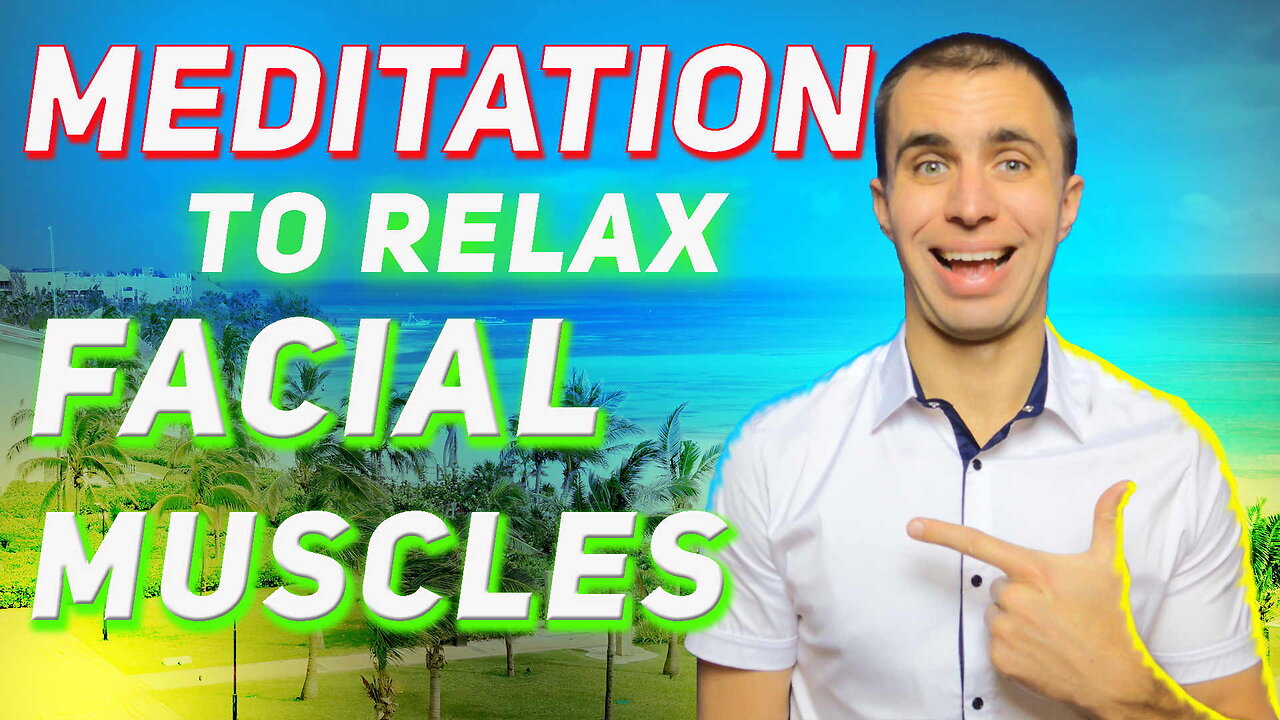Premium Only Content

Meditation to relax facial muscles and improve eyesight
The relentless pressure from screen time, stress, and environmental factors can take a toll on our eyesight and overall facial tension. However, meditation offers a holistic approach to alleviating this strain, promoting relaxation, and potentially enhancing eyesight. This article explores how meditation can be used to relax facial muscles and improve vision, providing a natural remedy to the challenges of modern living.
Understanding the Connection
The link between stress, facial tension, and eyesight deterioration is well-documented. Stress can lead to squinting, frowning, and other facial expressions that strain the eyes and surrounding muscles. Over time, this tension can contribute to vision problems. Meditation, known for its stress-reducing qualities, can help relax these muscles and, by extension, support better eyesight.
Techniques for Facial Relaxation and Eyesight Improvement
1. Mindful Breathing
Mindful breathing is the foundation of many meditation practices. It involves focusing on your breath, which naturally diverts attention away from stressors. As you concentrate on breathing, your facial muscles, including those around the eyes, begin to relax. This relaxation can help ease the strain on the eyes, offering a simple yet effective way to support vision health.
2. Visualization Meditation
Visualization is a powerful technique in meditation where you imagine a peaceful scene or object. This practice not only relaxes the mind but can also be directed towards relaxing the facial muscles. Visualize warmth or a gentle massage over your face and eyes, encouraging relaxation. This method can reduce muscle tension and eye strain, promoting healthier eyesight.
3. Palming Technique
While not a traditional meditation practice, palming can be a meditative activity. Rub your palms together until they feel warm, then gently cup them over your closed eyes. Ensure no pressure is applied to the eyeballs. The warmth and darkness help relax the eye muscles and relieve strain. Combine this with deep breathing to enhance the relaxation effect.
4. Yoga for the Eyes
Certain yoga practices focus on the eyes and can be meditative in nature. Eye yoga exercises, such as focusing on a candle flame (trataka) or moving the eyes in different directions without turning your head, can strengthen the eye muscles and improve focus. These exercises, when done in a meditative state, can help alleviate eye strain and support vision improvement.
5. Smiling Meditation
Smiling, even when forced, can reduce stress and relax the facial muscles. Engage in a meditation session where you focus on maintaining a gentle smile. This not only eases facial tension but also promotes a positive mood, further reducing stress and its effects on the eyes.
The Benefits of Regular Practice
Incorporating meditation into your daily routine can have profound effects on both your mental and physical well-being. For the eyes and facial muscles, regular practice can lead to:
Reduced tension and strain around the eyes
Improved circulation, offering better nourishment to the eye tissues
Enhanced ability to focus without strain
A general sense of relaxation and well-being, contributing to overall eye health
Conclusion
While meditation is not a cure-all for vision problems, it is a powerful tool for managing stress and relaxing the facial and eye muscles. By incorporating these techniques into your daily life, you can create a positive impact on your eyesight and facial tension. Remember, consistency is key, and the benefits of meditation grow over time. Embrace these practices as part of a holistic approach to eye health and experience the relaxation and clarity that come from within.
-
 3:12:37
3:12:37
TimcastIRL
6 hours agoGOP Councilman DOUSED IN GAS, Set ON FIRE In Virginia, Suspect In Custody | Timcast IRL
237K81 -
 2:32:23
2:32:23
The Quartering
6 hours agoOn To The Big Bosses! Act 2 Of Expedition 33
55.2K4 -
 7:36:34
7:36:34
SpartakusLIVE
8 hours agoTiger Blood RESTOCKED and 30% off w/ code SPARTAKUS30
81K -
 24:58
24:58
Law&Crime
9 hours ago $1.60 earnedSecond Note Leaves Disturbing Clues in New York City Killings
28.3K9 -
 1:36:57
1:36:57
Badlands Media
1 day agoAltered State S3 Ep. 39: Earthquakes, Energy Games & the Fall of the Narrative
62.8K14 -
 2:04:07
2:04:07
Due Dissidence
14 hours agoCharlie Kirk's GAZA LIES, Caitlin Clark Stalker, Palantir Goes Hollywood - w/ Kyle Matovcik | TMWS
38.3K8 -
 2:54:43
2:54:43
I_Came_With_Fire_Podcast
15 hours agoAmerica First, Trump Threatens China, Your Friendly Neighborhood Illegal, EPA Gets a "W"
37.6K8 -
 4:40:21
4:40:21
Geeks + Gamers
5 hours agoGeeks+Gamers Play- MARIO KART WORLD
27.5K2 -
 8:28:19
8:28:19
Dr Disrespect
14 hours ago🔴LIVE - DR DISRESPECT - BATTLEFIELD 1 - FULL GAME
170K7 -
 1:39:26
1:39:26
Glenn Greenwald
10 hours agoStephen Miller's False Denials About Trump's Campus "Hate Speech" Codes; Sohrab Ahmari on the MAGA Splits Over Antitrust, Foreign Wars, and More | SYSTEM UPDATE #495
114K75